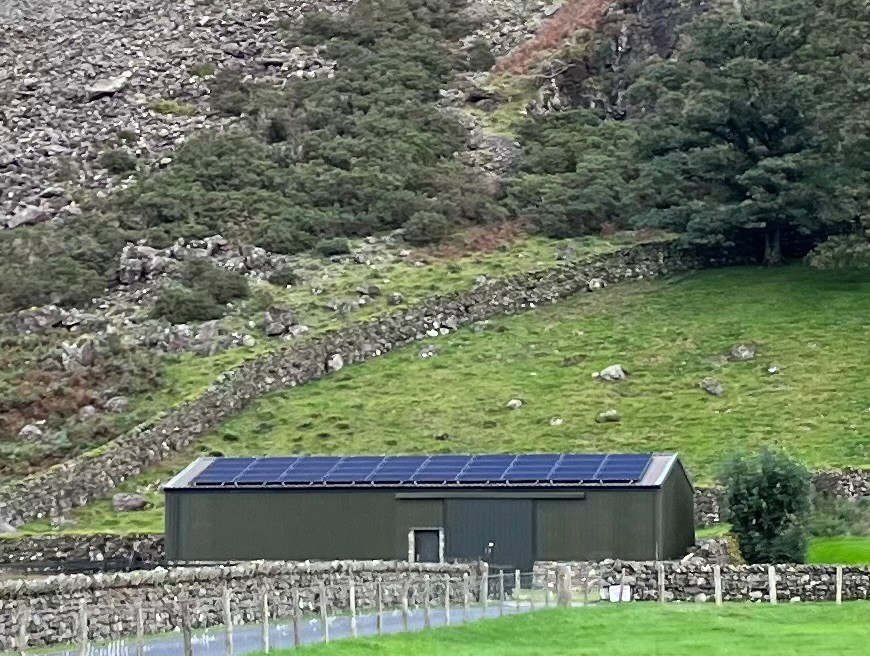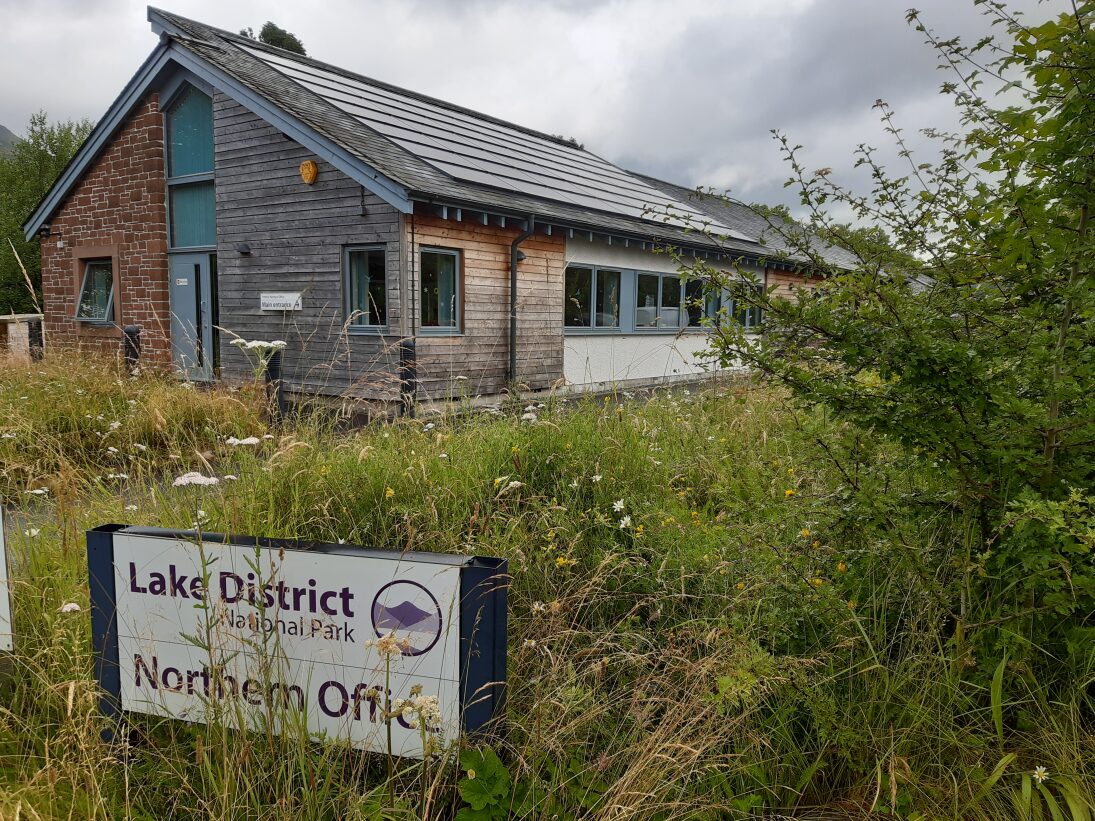This guidance sets out renewable energy specifications for commercial buildings including, shops, hotels and industrial buildings. The purpose of this guidance is to help applicants make successful planning applications for small-scale renewable energy schemes in the Lake District National Park Authority.
Local Plan Policy 20, renewable and low carbon energy, supports development that increases the proportion of energy generated by renewable and low carbon sources and encourages energy provision from local scale generation.
Renewable energy refers to energy flows that occur naturally and continuously in the environment, such as energy from the wind or sun. These sources can be used to heat and power homes. Renewable energy can be generated through solar photovoltaics, solar thermal panels, heat pumps and biomass.
It is advisable to seek advice from us at the earliest opportunity when developing renewable energy measures. We offer a free advice service to queries about whether planning permission is required or not. More information is available on our website: Do I need planning permission?
Permitted Development (PD) rights refer to work that can be carried out without the need for planning permission. Information on what constitutes as PD can be found on the Planning Portal website: Permitted Development Rights | Planning Permission | Planning Portal and on the Governments website: Planning Permission.
In the Lake District National Park, permitted development rights are restricted. Similarly, within Conservation Areas permitted development rights are also restricted. Even where planning consent is not required for a Listed Building you should contact the Authority to check whether there is a requirement for separate Listed Building Consent. You will need to consider the consent requirements for the building itself, its setting and its curtilage. The advice in this webpage and guidance in the Lake District Design Code can help you minimise harmful effects.
Please check the history of your property before carrying out any works in case your permitted development rights have previously been removed by the National Park Authority either by condition or by issuing an Article 4 direction. This would mean that you would have to submit a planning application for work which normally would not need one.
All forms of development are expected to conserve and enhance the landscape character in the National Park. Development, including renewable energy measures, must take a landscape-led approach to design.
For renewable energy projects this means using an understanding of landscape to inform the choice of renewables, the location and the design of the proposed technology.

Covering the whole area of the roof with panels on this shed looks simpler and neater than covering half the roof.
Solar photovoltaics (PV) produce electricity from the light of the sun. Solar PV should be used across the National Park, but care must be taken to select solar PV with the least visual impact.
Solar thermal panels collect heat from the sun to heat hot water. They work best alongside existing water heating systems which can help top up the heating system in winter months when solar energy is less abundant. Solar thermal should be used across the National Park, but care must be taken to select solar thermal with the least visual impact.
To minimise the impact of a solar system on the character of settlements and buildings these factors should be considered:
Biomass is mainly the use of logs, wood chips, wood waste or pellets to create electricity and heat. Biomass should be considered as a source of renewable energy generation when designing new developments. Small-scale domestic uses are likely to constitute permitted development, although permission may be required for larger schemes in community or commercial buildings. Biomass fuel from a sustainable local source will be encouraged.
All new build homes should include ground or air source heat pumps. Heat pumps are well suited to new build developments and can also be suitable in traditional buildings.
Ground source heat pumps use pipes that are buried underground to extract heat from the ground.
Air source heat pumps transfer heat from the outside air into a building to provide electric heating to generate hot water and heating. An air source pump unit will need to be fitted to a wall or placed on the ground, with plenty of airflow around it.
The Lake District Design Code Supplementary Planning Document (SPD) provides further design guidance for solar, heat pumps and biomass.

The size of panels on this roof help the system look more like an integral part of the roof and fit in with the building and its surroundings.